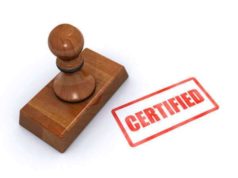
What You Must Know About Encumbrances Zoning
When purchasing a property, it is crucial to understand the different types of encumbrances and zoning restrictions that may exist. Both can significantly impact the use and value of a property, so it is important to have a thorough understanding of them before making a purchase.
In this article, we will discuss what encumbrances and zoning restrictions are, the different types that may exist, and how they can affect a property.
What are Encumbrances?
Encumbrances refer to any claims, liens, or restrictions on a property that limit its use or transfer of ownership. They can arise from many different sources, including government regulations, financial obligations, and legal disputes.
Types of Encumbrances
1. Liens
Liens are financial encumbrances that represent unpaid debts or taxes owed on a property. They can be placed by the government, such as a tax lien or a mechanic’s lien by a contractor who has not been paid. Until the debt is satisfied, the lienholder has a claim on the property and can prevent the owner from selling or refinancing it.
2. Easements
An easement is a right granted to another party to use a portion of a property for a specific purpose, such as providing access to a neighboring property or allowing utility companies to install and maintain lines. Easements can be private, such as a shared driveway agreement, or public, such as a sidewalk or road. Easements do not transfer ownership of the affected portion of the property, but they do limit the owner’s exclusive use and control of it.
3. Covenants, Conditions, and Restrictions (CC&R)
CC&R is a type of encumbrance that arises from private agreements between property owners or homeowners’ associations. These agreements can include restrictions on the use of the property, such as prohibiting certain activities or requiring specific maintenance standards. These restrictions are binding on the property owner and any subsequent buyers, and violating them can result in legal action.
4. Encroachments
Encroachments occur when a structure or part of a structure on a neighboring property, such as a fence or building, extends onto the property in question. An encroachment can impact the owner’s ability to use and enjoy their property and may require legal action to resolve.
Impact of Encumbrances on a Property
Encumbrances can significantly impact the value and use of a property. Liens can limit the owner’s ability to sell or refinance the property, while easements and CC&Rs can restrict the owner’s use and control of the property. Encroachments can create legal disputes and may require expensive legal action to resolve.
Before purchasing a property, it is crucial to conduct a thorough examination of any encumbrances that may impact it. This can include reviewing property records, conducting a title search, and working with a real estate attorney to ensure full disclosure of all encumbrances affecting the property.
What is Zoning?
Zoning is a type of government regulation that determines how land can be used and developed within a specific geographical area. Zoning laws dictate the permitted uses of a property, such as residential, commercial, industrial, or agricultural, and the types of structures that can be built on it.
Types of Zoning Regulations
1. Residential Zoning
Residential zoning restrictions limit the use of property to single-family or multi-family housing, such as apartments or housing complexes. These restrictions can limit the height and size of buildings as well as the density of the development.
2. Commercial Zoning
Commercial zoning regulations allow for the development of businesses and commercial properties such as offices, retail stores, and restaurants. These regulations may limit the size and height of buildings and can restrict the types of activities that can take place on the property.
3. Industrial Zoning
Industrial zoning permits the use of property for manufacturing, warehouses, processing plants, and other similar activities. These zoning regulations may require specific infrastructure, such as access to transportation and utilities, and may limit the proximity of industrial properties to residential areas.
4. Agricultural Zoning
Agricultural zoning restricts the use of property to farming and other agricultural activities. These zoning regulations may require specific infrastructure, such as irrigation systems, and may restrict the size and scope of farming operations.
Impact of Zoning on a Property
Zoning can significantly impact the use, development, and value of a property. Restrictive zoning regulations can limit the types of activities that can take place on the property and may limit the property’s potential for development or use.
Conversely, more liberal zoning regulations can increase the potential for development and increase the property’s value. For example, upzoning, which increases the density or development potential of a property, can significantly increase its value.
Before purchasing a property, it is crucial to understand the relevant zoning regulations in the area and how they may impact the property. This can include reviewing municipal zoning maps, obtaining a zoning certificate from municipal authorities, and working with a real estate attorney well-versed in local zoning regulations.
Conclusion
Encumbrances and zoning regulations can significantly impact the use, development, and value of a property. Before purchasing a property, it is crucial to conduct a thorough examination of any encumbrances and to understand the relevant zoning regulations in the area. This can ensure that the property meets the buyer’s intended use and avoids any legal complications in the future.
By conducting proper due diligence and working with a real estate attorney, buyers can avoid costly legal disputes and maximize the value of their investment.
Zoning laws in real estate refer to the regulations set to demonstrate how a property will be used.
These ordinances relate to the structure, both inside and out, of a building, house, or similar structure.
They are set so that all the structures in a given place are fit to the standards set for development by that town, city, municipality, county, or state.
Any change made to an existing property, as small as it is, must be placed against zoning laws to make sure it meets all codes and guidelines
The existence of zoning laws is to warrant that a property or structure on a property will be used beneficially for the public. There are different categories of zoning in real estate. They are agricultural, commercial, industrial, recreational, and residential. Residential real estate, the most common zoning structures, relate to single and multiple family dwellings, that may include an apartment or condominium complex.
The real estate zoning laws for residential units limit different aspects of the structure and how it is used. For example, they can regulate the height of an apartment building complex, and the size in relation to the lot. In regards to single and multiple family dwellings, zoning laws require a permit for any modification to such a property even if changing the windows of a house, and of course if planning to expand the house.
These regulations can keep a person from expanding their property against the proportions of a lot size in violation of the neighbor and the free space area guaranteed around it. The zoning laws can also restrain a single family home from becoming a multiple family home.
These laws are extremely important for any new home buyer, or prospective buyer. A person can easily make the mistake of planning to purchase a home based on the improvements they foresee themselves doing to that property.
This is why it can’t be stressed enough to familiarize oneself with the zoning laws for the place where you already own a home, if you’re looking to improve it, or where you will buy a home, for any future modifications and prevention thereof.
Depending on the approval of a zoning change or variance, sometimes zoning laws can be overruled. A zoning change can take place through application by the property owner to do so.
They must state the case of why the zoning change must happen using any means necessary (i.e. diagrams, models, etc..). A person seeking a zoning change can use the services of an attorney or an engineer for assistance with such a process.
An owner can also ask for a variance, which is simply a request to divert from the zoning laws that exist. This can grant a person the right to use the property for a purpose otherwise than what is intended in the zoning law. It is crucial for a current or prospective property owner, whether residential, commercial, etc… to become familiarized with zoning laws and the different ways to amend them if necessary.
























